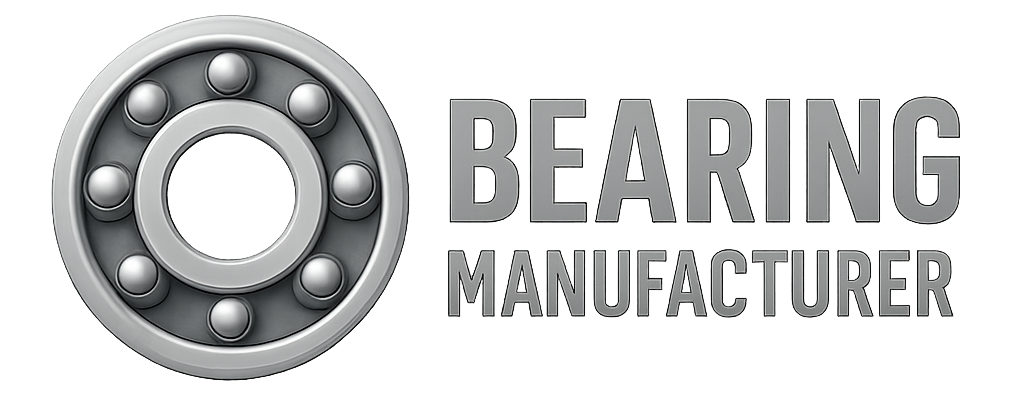Bearings are essential components in mechanical systems, enabling smooth, low-friction rotation in countless applications. Among the many techniques that enhance bearing performance, preloading plays a critical role—especially in ball bearings like the 608 bearing.
But what exactly is bearing preload, and why is it so important in modern engineering?
Understanding Bearing Load vs. Bearing Preload
What Is Bearing Load?
Bearing load refers to the external forces applied to a bearing during operation. These forces can be:
-
Static (when the bearing is stationary), or
-
Dynamic (during movement or rotation)
The magnitude and direction of the bearing load directly impact its performance, service life, and failure risk. All bearings are designed to handle specific load limits, and exceeding those limits leads to premature damage.
What Is Bearing Preload?
Bearing preload is the internal force applied between the bearing’s rolling elements and raceways in the absence of any external load. This force removes internal clearance, effectively acting as a negative clearance. Preloading ensures constant contact between internal components, minimizing internal play and improving operational stability.
The Importance of Bearing Preload
For standard ball bearings, such as the 608 bearing, preload eliminates the built-in internal clearance designed for free movement. Without proper preload, rolling elements may slide rather than roll, potentially causing vibration, misalignment, and reduced accuracy.
Properly applied preload offers the following performance advantages:
1. Increased Rigidity and Accuracy
Preloading enhances structural rigidity, which is especially important in high-precision systems. It ensures the bearing maintains a consistent position under load, reducing deflection and increasing positioning accuracy.
2. Reduced Vibration and Noise
Loose bearing components can generate vibration and noise. Preload keeps all parts in contact, resulting in quieter operation and lower vibration—contributing to both performance and service life.
3. Improved Load Distribution
Preloading ensures a more uniform distribution of force across the rolling elements, reducing localized stress and promoting even wear, which extends the bearing’s operational lifespan.
Challenges of Bearing Preload
While beneficial, bearing preload must be applied with care. Incorrect preload—whether too much or too little—can introduce new problems:
-
Excessive Preload: Leads to increased friction and heat, accelerating lubricant degradation and causing internal damage due to high torque, thermal expansion, or fatigue.
-
Insufficient Preload: Causes unwanted clearance, vibration, and fretting between surfaces, which results in poor positioning and premature wear.
How Much Preload Is Appropriate?
The correct amount of preload depends on multiple engineering factors, such as:
-
Bearing type and size
-
Required system stiffness
-
Torque and speed parameters
-
Expected lifespan
-
Thermal expansion and loading conditions
Preload Scenarios:
-
No play or interference fit
All rolling elements are under continuous load, causing overheating and rapid wear. -
Standard play in the free state
Low rigidity leads to slippage and potential misalignment. -
Proper preload applied
Improves rigidity, load distribution, and overall bearing life.
How to Preload a Bearing
Achieving the correct preload involves selecting the right method based on the application’s characteristics.
Fixed Preload
Fixed preload is built into the bearing assembly during manufacture or installation. It is achieved by:
-
Using pre-sized spacers
-
Creating dimensional offsets between bearing rings
-
Incorporating wave washers or springs
Fixed preload is ideal for applications with stable and predictable operating conditions.
Adjustable Preload
Adjustable preload allows for field customization using:
-
Shims
-
Threaded nuts
-
Spacers
-
Wave springs
This method is more flexible and preferred in variable or uncertain operating environments.
Types of Preload
Radial Preload
Radial preload is used primarily in cylindrical roller bearings. For tapered bore bearings, preload is applied by:
-
Press-fitting the inner ring onto a tapered shaft
-
Creating an interference fit that expands the inner ring
-
Measuring internal clearance with precision gauges to achieve target preload
Axial Preload
Axial preload is required for:
-
Single row angular contact ball bearings
Axial preload is typically applied by mounting bearings in either back-to-back or face-to-face configurations. Additionally, deep groove ball bearings with increased radial internal clearance (C3 or C4) may also be axially preloaded to generate a contact angle.
Preload in Angular Contact Ball Bearings
Angular contact ball bearings require precise preload to maintain constant raceway contact and optimize performance. Two main methods are used:
1. Axial Displacement
-
Mount bearings in matched sets
-
Displace one bearing ring axially to generate preload
-
Select either back-to-back (DB) or face-to-face (DF) arrangements depending on application requirements
2. Spring Preload
-
Use coil or wave springs to apply constant axial force
-
Spring preload compensates for thermal expansion and is ideal for light-to-moderate loads
-
Not suitable for systems requiring high stiffness or variable load directions
Considerations:
-
External Axial Loads: May alter preload unintentionally. Consider adjusting contact angles or using spacers.
-
Thermal Effects: Expansion due to temperature can increase or reduce preload.
-
Precision Required: In high-accuracy systems, consult engineering services to ensure preload is within target specifications.
Applications of Bearing Preload
Bearing preload is used across many industries to prevent slippage, enhance positioning accuracy, and extend bearing life—especially in high-speed or precision applications.
Automotive Industry
Wheel assemblies use preloaded bearings to ensure rotational stability and load support without excessive play.
Aerospace
Aircraft and spacecraft systems demand exceptional accuracy and rigidity. Preloaded bearings meet these strict performance standards.
Machine Tools
Spindles in precision machining tools use preloaded bearings to maintain tight tolerances during high-speed rotation and heavy cutting forces.
Conclusion
Bearing preload is a foundational concept in bearing design and application—especially for ball bearings like the 608 bearing. By eliminating internal clearance, preload improves rigidity, reduces vibration, and distributes loads more evenly.
However, preload must be applied with precision. Both excessive and insufficient preload can degrade performance or cause failure. Whether fixed or adjustable, a well-designed preload strategy maximizes bearing efficiency, longevity, and reliability.
At Bearing Maker, we supply a comprehensive range of bearings engineered for preload-critical applications—backed by technical support to help you make the right choice for your system.
